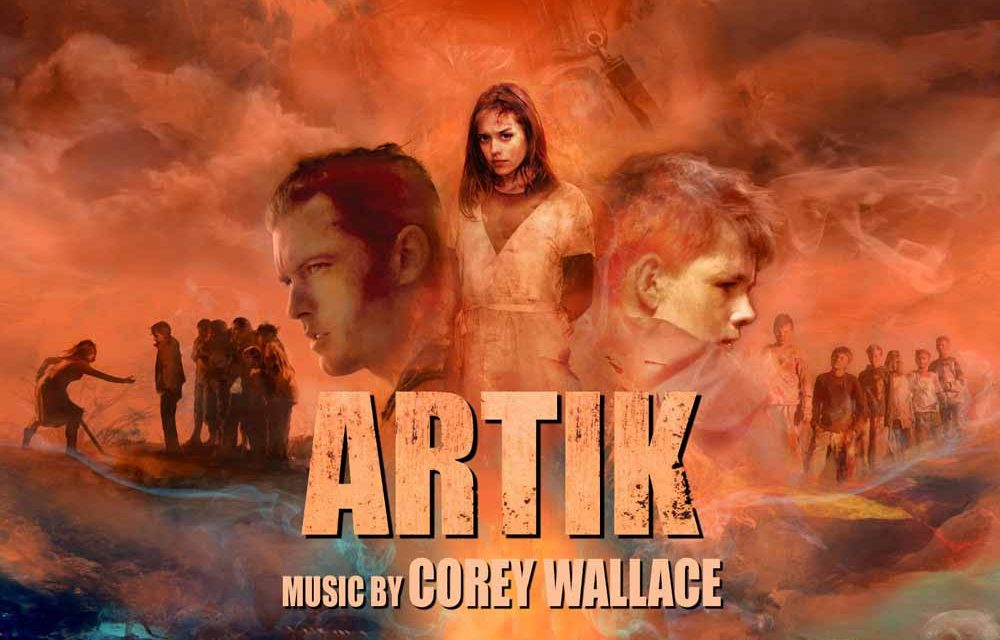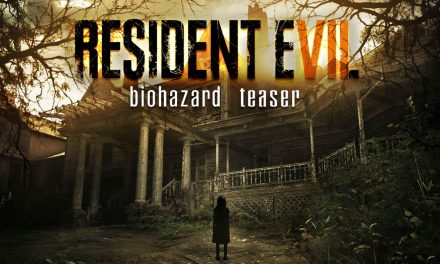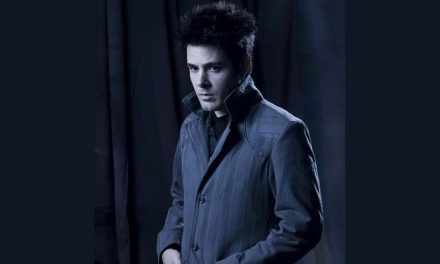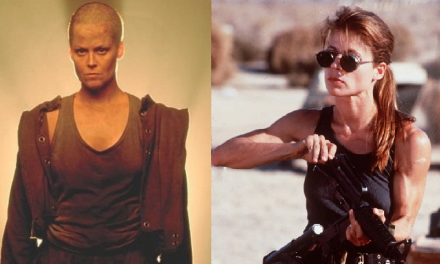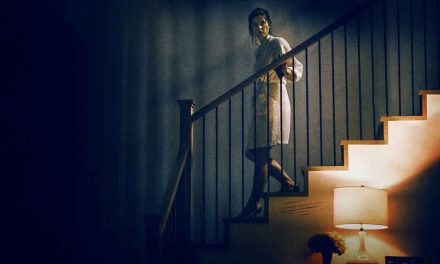There are many elements that must align to make a good horror film. One of those elements being the score. Some of the most memorable horror films have had scores that almost act like another main character. Examples being John Carpenter’s original Halloween score or Bernard Hermann’s piercing Psycho sounds.
Another more recent film that this is also the case, is Tom Botchii’s Artik. We are spotlighting Artik because Notefornote Music just released Corey Wallace’s score for the comic book serial killer film.
We decided to speak with Wallace about what goes into making a memorable horror score and his creative process for Artik.
Read the full interview below. You can watch Artik on all VOD platforms.
-The Artik opening credit music alone is pretty terrifying, especially just listening to it without watching the screen. I think it’s scary because it’s hard to anticipate what sound or cue is coming next. Did you do this to establish uneasiness and have audiences on the edge of their seats?
Absolutely. The goal of a Main Titles cue is to set the tone for the film, to lay the groundwork for themes, sounds, style, and feelings that the viewer can expect going forward. It’s a microcosm that poses the questions “Who are these characters, what is this world, and why should we be afraid to enter it?”.
I tried to make the Artik Main Titles creep in disturbingly, hit hard with surprising, jagged edges, and overall be unsettling. The ticking pulse of the piece, starting soft and getting stronger, to me, feels like the footsteps of a disturbed force coming towards me.
I didn’t have this amazing animated sequence by Behnam Merabiani when I started scoring the film. I was working on another suspense scene, and when director Tom Botchii heard the pulse for that cue he said “That’s the Main Titles!”. Behnam then animated to the rhythm of that cue, and later we conformed to the visuals and added all the violent cello bursts and hits to correspond with the cuts and animated shaking.
-When you are scoring an intense/bloody movie like Artik, do you have to take any breaks to clear your mind in between scenes? Or do you watch it so many times when scoring that it doesn’t phase you?
If you’re asking about the gore and violence, I’d say that I get pretty numb to it. I have to take frequent breaks but for the opposite reason that I think you’re suggesting.
Because I get used to the violence, taking a break to clear my head allows me to come back fresher so I can more effectively experience the intensity. Getting used to the film works against the scoring process because so much of a horror film’s effectiveness is the immediate, visceral response to the images, so while living with the film for a while, I have to try and keep that feeling from the first watch as close to the surface as possible.
It becomes hard to tell if stings are working or if tension is building properly and taking a break from a cue for a day, a week, or sometimes weeks, can help me forget what a cue feels like. I sometimes manage to scare myself when I return to a cue, and that’s pretty much surefire that the cue works.
This process can reveal that stings don’t always have to be very big or loud to be effective. It’s more important that they’re prepared well and timed correctly. Sometimes very small sounds can be absolutely terrifying.
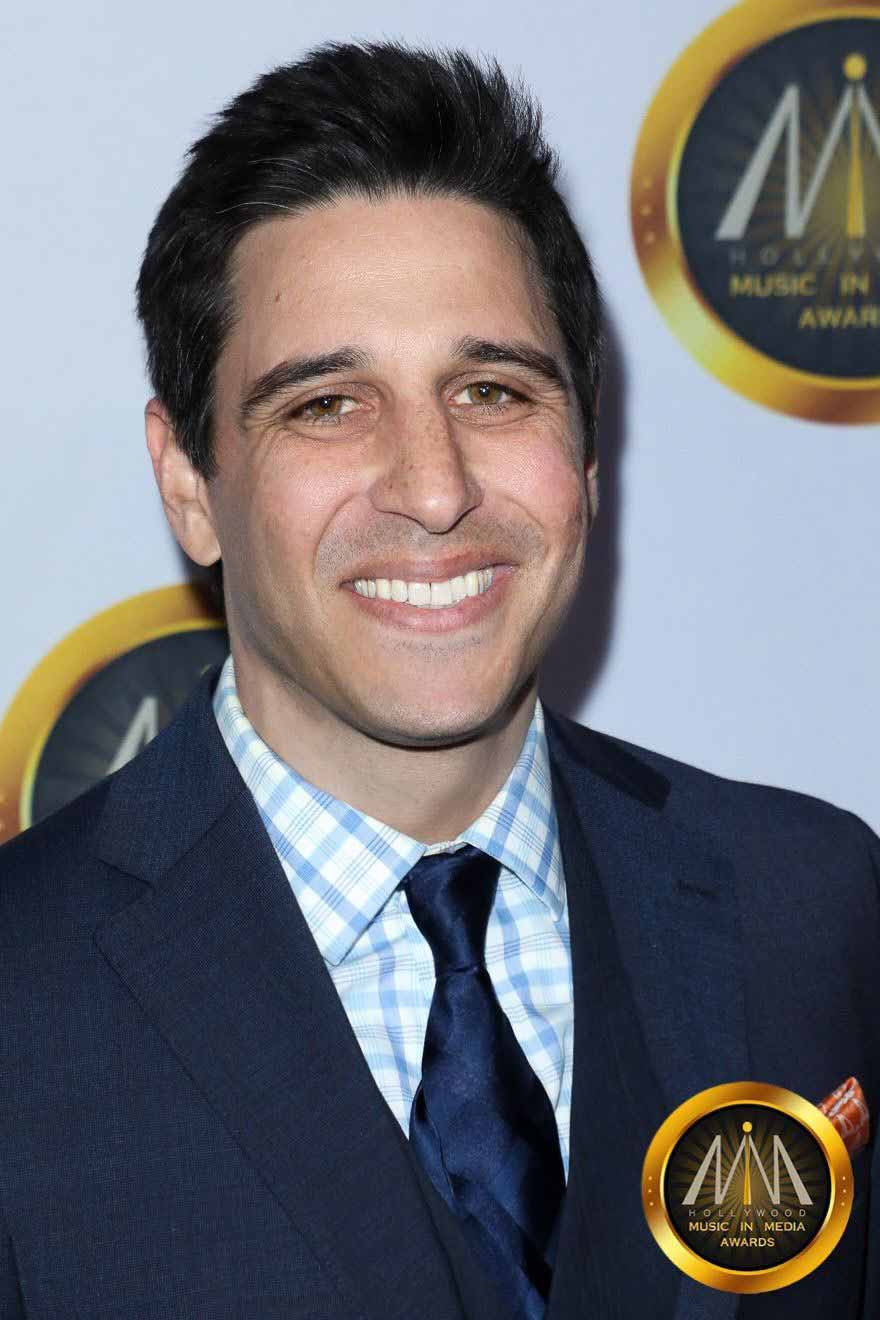
-In horror films, the score signals when something bad is about to happen. Like the first death scene in Artik, when they are on the side of the road. How do you decide when to start this sense of dread/fear?
I’ll start by saying that a scene like this, 10 minutes into the film, is most effective if that overall sense of dread and fear has been started from the very beginning of the film. The Main Titles sets the tone and communicates to the audience that they can expect something terrible to happen, and the tension ensues waiting for that moment.
It’s rare that a horror film starts, and within the first few minutes, the viewer is unsure whether or not it’s a horror film. It’s part of the genre, and the exceptions to this are specifically used to play against the convention. During the scene in question, I start the sense of dread when it is clear that there is something that we should fear. It’s important not to get ahead of the viewer and give things away.
The music starts when Artik walks away from the good-samaritan helping him with his engine. At face value, this is not significant, but everything we’ve seen before this moment, from the opening images and early scenes to the way the film has been edited and the music we’ve heard, has ingrained in the viewers’ minds that something is about to go down in this scene. More importantly, the camera follows Artik which tells the audience that his motion is dramatically meaningful.
The music starts here to signal the audience, not as give-away, but as a confirmation of what they already know to be true. When Artik grabs the hammer and spike off the truck, it’s clear that the ensuing violence is inevitable, so here the pulse kicks in and the music escalates.
-Did you work on any of the film’s sound design? The score and sound design for this film seems to be pretty interwoven.
The sound design and final mix were done by the terrific Josh Eckberg at a Warner Bros. mix stage, and you’re right, it completes the puzzle in addition to the score. Just as a director gets to experience the film anew when the score starts being added, hearing the sound design made me feel like I was seeing Artik for the first time. Josh added some great ambiance, some cool bass sounds, basically this dreadful sonic mist over scenes in addition to all the practical sounds, and it made a great backdrop for the gritty, forward sounds of the score.
The fact they sound as one is a testament to Josh’s mix and Tom’s vision. It’s very helpful when sound and music departments communicate early on so that there’s a clear picture of how they should complement one another. When this is not possible, as was the case on Artik, it becomes even more important that the director have a vision for which moments are music standouts and which ones should be cleared for sound, this way nobody is competing for attention and making a big mess. This is especially true on lower budget films or fast turnarounds, where creative and production time needs to be used very efficiently.
-Your score is interesting because you even make sunflowers scary. Was this intentional?
Yes, the shots of sunflowers, some in the daylight, are more than just transitional or establishing shots in the film. They comment on one of Artik’s central themes that the facade of beauty and normalcy can mask the darkness underneath, whether it’s the torture and death behind the closed doors of Artik’s idyllic farmhouse, or the abuse that Holton and the farm children endure under the guise of familiarity.
Holton (played by Chase Williamson) expresses this in one of my favorite scenes, during his monologue at the Al-Anon meeting. He’s quite moving. As a side note, this scene has some of the most subtle music of the entire film, and it’s because Chase is so effective, I didn’t have to do much. In this scene, Holton reflects on how the perspective in which we choose to see our lives, and what actions we take because of that, has a profound effect on our outcome.
The same shot of sunflowers scored by Vivaldi’s Four Seasons conjures up an entirely different feeling. Tom wanted to show the horror underneath this beautiful imagery. It’s all about point of view, and I love how film music can have this transformative effect on the picture.
-What do you think is key to scoring a horror film?
Horror films are very human stories when you boil them down. They’re primal and connect with raw, gut feelings and emotions. I think the key is tapping into those emotions and expressing them musically so the audience can feel them.
I love film music because it’s the connective tissue between the intellectual and emotional experiences of a film, and in horror, the music has the power to stir up deep down fears and bring them up to the surface.
Other important attributes like getting the tone and sound palette just right, getting the timing of entrances, stings, and escalations just right, all feed into making sure the score is connecting with the right feelings.
-Was there a horror film score that had a particularly strong impact on you?
John Carpenter’s Halloween and Marco Beltrami’s Scream are the most notable from my youth. At the time, it wasn’t so much those scores that had an impact on me as much as it was the experience watching those films, but looking back, it’s obvious to me how much those scores impacted my love for those films, as well as the influence they’ve had on my career.
I talked at some length in another interview about my experience working for composer Christopher Young (Hellraiser, Spider-Man 3), and during that time I analyzed every note of his score for Sam Raimi’s Drag Me To Hell.
You could write a horror-scoring-bible based on this one score alone. Chris uses almost every compositional and production technique there is, ranging from simple, tuneful melodies to extremely dense, dissonant orchestral textures, as well as custom sampling and modern sound design.
The instrumentation incorporates orchestra, choir, exotic instruments, a classical violin soloist, and it’s all held together by multiple, recurring, memorable themes that help guide the story. Despite using everything including the kitchen sink, it all feels like one cohesive piece of work. It’s truly remarkable.
The film also covers almost all types of dramatic scenes found in horror and genre films, from quiet suspense scenes to big set pieces, tongue-in-cheek horror-comedy to intense action scenes, connecting-the-dots problem solving, and even a love story, so there’s a template in this one score alone on how to use music to cover all these dramatic needs.
-Who do you contribute to giving you a start in the composing world?
The first compositions I wrote were jazz charts for my high school jazz combo, so Dr. Dan Brame of Deerfield High School in Deerfield, IL gets a lot of credit for that mentorship. He also taught a very advanced music theory class for a high school which gave me a leg up going into college.
From there, I had an extremely roundabout path into composition full time, which is a story for another day, and having that strong music theory foundation is partly what made it possible for me to purse composition. My friend and filmmaker Evan Pesses gets a big share of the credit too.
During my undergrad at the University of Wisconsin-Madison, it was his student film Remington Rand that was my first film score. I scored that film without modern technology, using a stopwatch and a metronome to get the sync right, and I wrote it on pencil and paper with the aid of a piano.
The night before the recording session, I had to rearrange the score and recopy the parts, all by hand, because a few players had dropped out of the session. It took me all night, but I really loved every minute of it, and I came out of feeling like I was on the right path.
- Horror on Netflix in August 2024 - July 26, 2024
- Electrophilia – Review | Fantasia (2/5) - July 25, 2024
- The Beast Within – Review | Fantasia (3/5) - July 23, 2024

